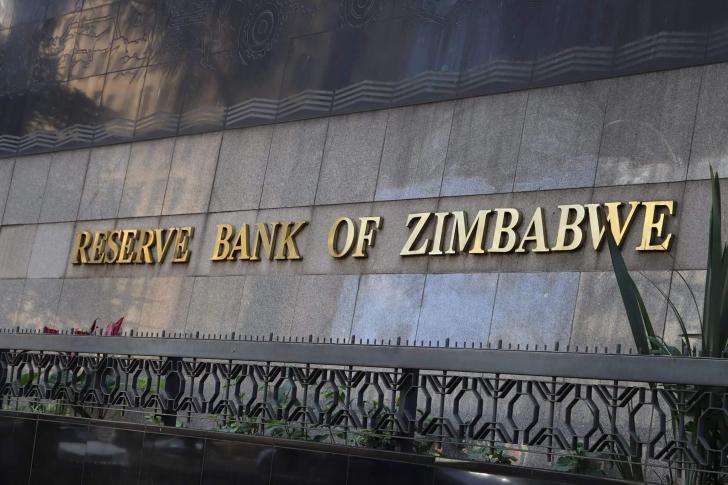News / National
Zimbabwe central bank cuts exporter retention threshold
07 Feb 2025 at 06:34hrs |
0 Views

The Reserve Bank of Zimbabwe (RBZ) has reduced exporters' foreign currency retention threshold from 75% to 70% as part of efforts to promote the use of the domestic currency, the Zimbabwe Gold (ZiG), and to ensure economic stability.
Announcing the changes in the 2025 Monetary Policy Statement, RBZ Governor Dr. John Mushayavanhu outlined several measures designed to anchor the domestic currency and gradually transition the economy towards using ZiG as the sole transaction currency by 2030.
“This adjustment is to guarantee continued stability in the interbank foreign exchange market by augmenting the supply of foreign currency while building the critical foreign reserves needed to anchor the ZiG," Dr. Mushayavanhu stated.
The new policy increases the effective surrender portion of export proceeds from 25% to 30%, effective immediately. Exporters are now required to convert a larger portion of their earnings into ZiG, which will be used for local obligations, including tax payments.
“The additional 5% will ensure exporters mobilise sufficient ZiG to meet their local currency obligations while also helping to strengthen the domestic currency's role in the economy," Dr. Mushayavanhu said.
To address concerns over value preservation, the central bank has launched a US Dollar Denominated Deposit Facility (USDDDF). This facility allows exporters to invest the additional surrendered portion of their foreign currency earnings with the Reserve Bank if they do not require immediate conversion to ZiG.
“Exporters can invest their funds in the USDDDF and withdraw the equivalent in ZiG on demand, based on the prevailing interbank exchange rate. This transfers exchange risk from the exporter to the Bank, ensuring stability," explained Dr. Mushayavanhu.
The initiative is aimed at mitigating exchange rate fluctuations while maintaining liquidity in the domestic currency.
In addition to the retention adjustments, the RBZ unveiled the Targeted Finance Facility (TFF), funded through existing statutory reserves. This facility aims to boost credit access for critical productive sectors, enabling increased lending without disrupting overall financial stability.
Dr. Mushayavanhu revealed that the TFF has been expanded to include wholesalers and retailers, helping them restock efficiently amid liquidity challenges. Beneficiaries of the facility will also have access to the Willing Buyer Willing Seller Interbank Foreign Exchange Market to meet their essential import needs.
“The TFF is a deliberate effort to balance monetary stability with economic growth by channeling credit to key sectors without injecting new money into the economy," the Governor said.
The RBZ remains committed to a tight monetary policy stance to anchor exchange rate stability, a critical factor in Zimbabwe's multi-currency economy.
Dr. Mushayavanhu projected average month-on-month inflation to remain below 3% throughout 2025. However, annual inflation is expected to temporarily rise between April and September due to base effects from the October 2024 spike. The RBZ expects inflation to moderate significantly by year-end, settling between 20% and 30%.
“Our prudent reserve money targeting and strategic interventions in the foreign exchange market will ensure exchange rate stability, thereby driving inflation downward," he noted.
As the central bank works towards establishing ZiG as the primary transaction currency by 2030, the measures announced in the Monetary Policy Statement reflect its focus on strengthening economic fundamentals, ensuring exchange rate stability, and fostering sustainable growth.
Dr. Mushayavanhu reaffirmed the RBZ's commitment to a disciplined monetary approach while supporting key sectors to stimulate economic activity.
“These adjustments are part of our broader efforts to achieve long-term stability and enhance the economy's resilience," he concluded.
Announcing the changes in the 2025 Monetary Policy Statement, RBZ Governor Dr. John Mushayavanhu outlined several measures designed to anchor the domestic currency and gradually transition the economy towards using ZiG as the sole transaction currency by 2030.
“This adjustment is to guarantee continued stability in the interbank foreign exchange market by augmenting the supply of foreign currency while building the critical foreign reserves needed to anchor the ZiG," Dr. Mushayavanhu stated.
The new policy increases the effective surrender portion of export proceeds from 25% to 30%, effective immediately. Exporters are now required to convert a larger portion of their earnings into ZiG, which will be used for local obligations, including tax payments.
“The additional 5% will ensure exporters mobilise sufficient ZiG to meet their local currency obligations while also helping to strengthen the domestic currency's role in the economy," Dr. Mushayavanhu said.
To address concerns over value preservation, the central bank has launched a US Dollar Denominated Deposit Facility (USDDDF). This facility allows exporters to invest the additional surrendered portion of their foreign currency earnings with the Reserve Bank if they do not require immediate conversion to ZiG.
“Exporters can invest their funds in the USDDDF and withdraw the equivalent in ZiG on demand, based on the prevailing interbank exchange rate. This transfers exchange risk from the exporter to the Bank, ensuring stability," explained Dr. Mushayavanhu.
The initiative is aimed at mitigating exchange rate fluctuations while maintaining liquidity in the domestic currency.
In addition to the retention adjustments, the RBZ unveiled the Targeted Finance Facility (TFF), funded through existing statutory reserves. This facility aims to boost credit access for critical productive sectors, enabling increased lending without disrupting overall financial stability.
“The TFF is a deliberate effort to balance monetary stability with economic growth by channeling credit to key sectors without injecting new money into the economy," the Governor said.
The RBZ remains committed to a tight monetary policy stance to anchor exchange rate stability, a critical factor in Zimbabwe's multi-currency economy.
Dr. Mushayavanhu projected average month-on-month inflation to remain below 3% throughout 2025. However, annual inflation is expected to temporarily rise between April and September due to base effects from the October 2024 spike. The RBZ expects inflation to moderate significantly by year-end, settling between 20% and 30%.
“Our prudent reserve money targeting and strategic interventions in the foreign exchange market will ensure exchange rate stability, thereby driving inflation downward," he noted.
As the central bank works towards establishing ZiG as the primary transaction currency by 2030, the measures announced in the Monetary Policy Statement reflect its focus on strengthening economic fundamentals, ensuring exchange rate stability, and fostering sustainable growth.
Dr. Mushayavanhu reaffirmed the RBZ's commitment to a disciplined monetary approach while supporting key sectors to stimulate economic activity.
“These adjustments are part of our broader efforts to achieve long-term stability and enhance the economy's resilience," he concluded.
Source - The Herald
Join the discussion
Loading comments…




























